Watch Industry Tastemakers on Their Top 10 Timepieces and What Makes a Collectible
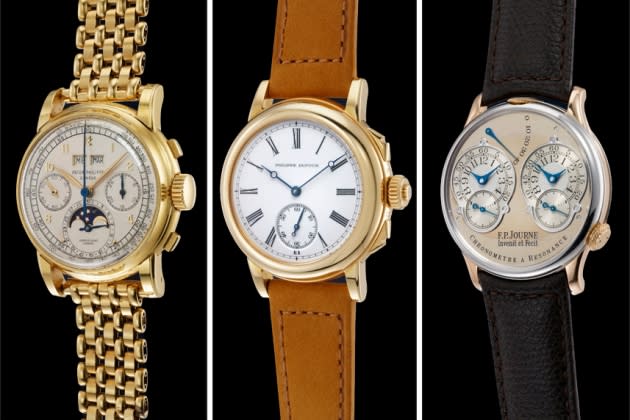
The Swiss watch industry produces most of the world’s luxury timepieces, home to brands such as Rolex, Patek Philippe, Audemars Piguet, IWC and Tag Heuer that are known for their intricate mechanical watches.
Most of these firms also bear influence outside of the watchmaking industry, embracing the worlds of aviation, diving, polo, racing or even outer space — pioneering new heights in technology and innovation.
More from WWD
Watch releases started strong this year and have only heated up, regardless of the ripple effects of the COVID-19 pandemic. Demand for fine watches is soaring, with the Swiss Watch Federation last week reporting that Swiss watch exports reached their highest monthly level in seven years in October at 2.1 billion Swiss francs, or $2.26 billion at current exchange. As the world looks toward moving beyond COVID-19, the watch space feels optimistic with a mix of vintage reissues alongside new trends.
At the same time, watch brands held firmly to limited production runs that made their timepieces even more rare, resulting in an online boom in the business of buying, selling and flipping pre-owned and vintage watches and a growing number of start-ups competing to become the dominant digital marketplace.
Most luxury watch brands usually contain a few (or many) classics whose names have been around for years. Brands like Rolex don’t typically release new models, but rather continue to improve on their core collection over time with iconic styles such as the Submariner and Datejust, which have been around for generations. Other brands have opted to keep their house codes alive by continuing to offer modern versions of designs that have proved successful for many years.
However, there has been a shift in mindset among some collectors, who are moving toward independent brands to seek value, high-end finishing and something perhaps just as rare and limited but at a more accessible price point.
Here, WWD speaks to some key players and watch enthusiasts to gain perspective on the top watches worth owning. Only time will tell if they’re right.
Name: @mrwatch85, financial adviser and private collector
IG Handle: @mrwatch85
Top 10 List
MB&F
Greubel Forsey
F.P. Journe
De Bethune
Gr?nefeld
Kari Voutilainen
A. Lange & S?hne
Rolex
Jaeger-LeCoultre
Patek Philippe
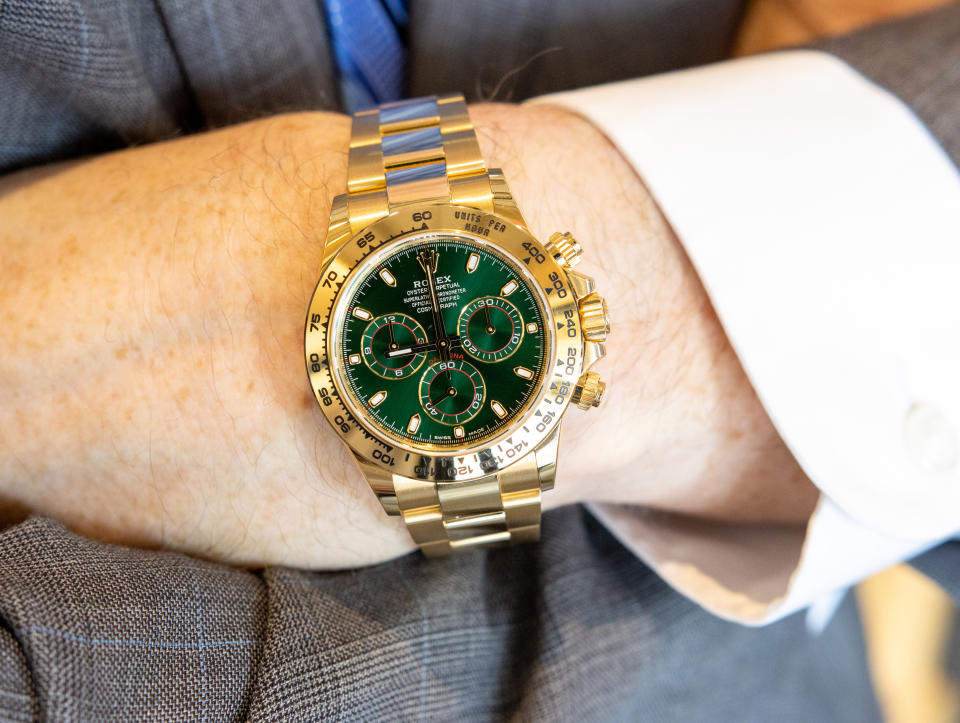
Courtesy Photo
WWD: What makes a watch a collectible?
I suppose the rarity of a piece is what makes a watch collectible, although the market has changed with the use of Instagram, which means that pieces that are hyped are very much collectible also. The supply of watches has reduced yet the demand is getting much stronger, so much so that the brands are unable to produce enough watches to meet the demand. Therefore more watches are becoming collectibles purely with the lack of supply.
WWD: How has the resiliency of the watch market performed during the pandemic (pre and post/now)?
The watch market seems to continue to perform both pre and post the pandemic. If anything due to the pandemic, fewer watches have been produced and therefore the secondary market pricing has increased, therefore demand further increased and doesn’t look to be slowing down at all. As for buyers’ mentality, overall I find that more people are wanting to buy luxury watches as they see the strong resale values and therefore more people who wouldn’t normally buy luxury watches and part with significant amounts of money will be open to the idea purely as they see it as an investment.
WWD: How is the secondhand market/vintage affecting the release schedule of timepieces and overall value?
The secondhand market is a crazy market right now with prices of certain models being double or triple what the retail price is, thus making new releases even harder to acquire, especially if there isn’t already an existing relationship. It is getting much harder for new collectors to get into the market with their first pieces, and some will then go to the secondary market and pay gray market prices to get their dream piece.
WWD: How has Instagram affected the resurgence of classic timepieces?
Instagram is definitely the platform for promotion, therefore has massively increased the interest in classic timepieces. I wasn’t akin to the watch market many years ago and so only know the market through Instagram, but what I have experienced to date is that people can see more watches through this medium and therefore it has taken all watches and their popularity to another level.
WWD: With Instagram being a key tool for watch collectors, do you think the platform helps or affects the releases and sales of watches versus secondhand pieces?
An Instagram post can reach so many more people with a new release within minutes and has the ability to release teasers prior, which build the hype and create a lot of momentum before the release. Perhaps that’s largely why most releases are sold before they are even available for sale where collectors have existing relationships with their authorized dealers.
Secondhand pieces also can be marketed easily on the ‘gram for other collectors to see and so a great platform for a business to sell watches. Instagram is great at showing you what you like and therefore content/watches reaches a like-minded audience/target market with ease.
On the flip side, however, it also opens up the opportunity for fraud and selling of fake watches. Individuals really need to do their due diligence before buying and potentially being duped.
Name: Giorgia Mondani, founder of Mondani Web
IG Handle: @giorgiamondani
Top 10 List:
Rolex sport models such as Daytona Submariner GMT-Master
Patek Philippe Nautilus and Aquanaut
Audemars Piguet Royal Oak
Omega Speedmaster
Cartier Crash, Tank, Santos
F.P. Journe
Richard Mille
Chopard Happy Diamonds, Alpine Eagle
Tag Heuer Monaco
Tudor Pelagos, Black Bay
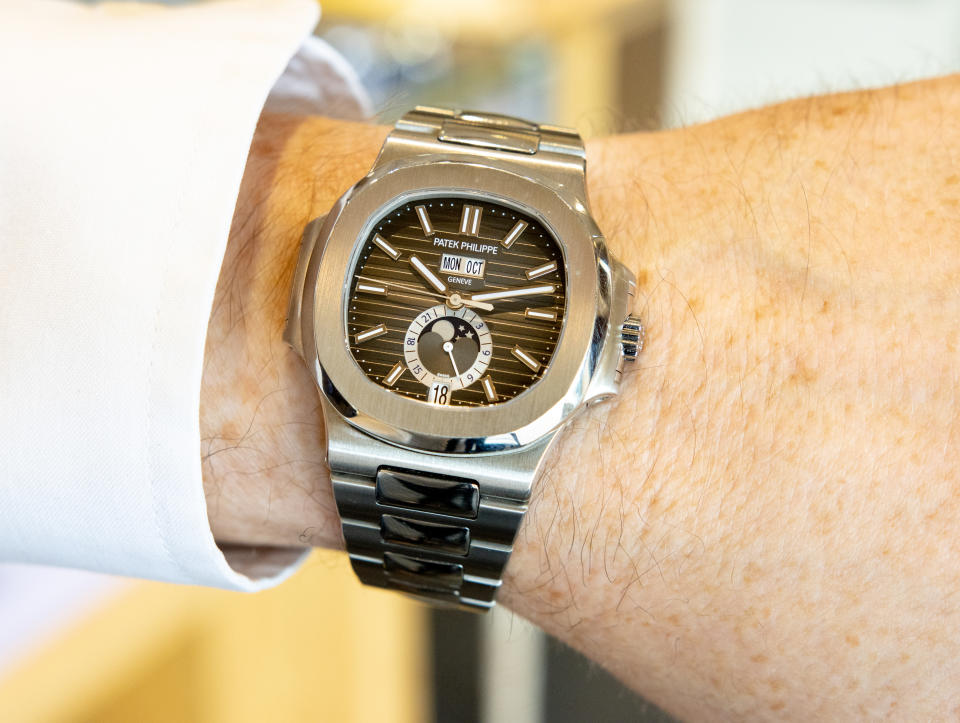
Courtesy Photo
WWD: What makes a watch a collectible?
The history of the brand and a specific model is certainly important. The marketing the brand does today [also] influences the position of that watch in the market. Luxury watches represent today — if a collector can choose — an investment as well so collectors are buying more and more.
WWD: How has the resiliency of the watch market performed during the pandemic (pre and post/now)?
It is one of the few markets that increased. The luxury watch is seen as a safe good investment today, more than keeping money in the safe. The November session of international auctions that just ended achieved incredible results and that is another proof that the market is still growing.
WWD: How is the secondhand market/vintage affecting the release schedule of timepieces and overall value?
There’s a big difference between brands like Rolex, Patek Philippe and Audemars Piguet, where demand is higher than offers, so basically, the market is made by the secondary market and not by the official retailers, and other brands where one can still afford the demand of all models and their prices in the secondary market are lower than retail.
WWD: How has Instagram affected the resurgence of classic timepieces?
Instagram has changed everything. In the watch business, today Instagram is kind of the center of the world. Instagram gave collectors and dealers the chance to see and find timepieces everywhere in the world, without geographical limits, as well as creating a new way to advertise products: through influencers and this is a very important part in watch sales today.
Also, Instagram offers the chance to easily contact whoever you want, you don’t have to look for their telephone number or email, you simply send a message there and in many cases, also in celebrities’ profiles, the person behind the screen is the real owner of the profile.
Unfortunately Instagram is also a very good platform for scammers. That is why our network of trusted dealers, Mondani Web, is working very well, because we suggest to collectors where to buy safely and we offer serious dealers the chance to appear and sell more.
Name: Elizabeth Smith, boutique director at Oliver Smith Jeweler
IG Handle: elizabethsmith2
Top 10 List:
Audemars Piguet 15202ST Royal Oak in stainless steel with a blue dial.
Patek Philippe 5726 Nautilus in stainless steel and a gray dial.
Rolex Daytona Reference 116508 in yellow gold with a green dial.
Cartier Santos WSSA0030 stainless steel watch with graduated blue dial.
Omega Speedmaster 145.012, stainless steel with black dial, from 1968.
Panerai Luminor 202A, stainless steel, black dial.
Blancpain Fifty Fathoms 5015 1130 52A, stainless steel, black dial with black dive bezel.
IWC Big Pilot Le Petit Prince IW5010, stainless steel with a blue dial.
Jaeger-LeCoultre Reverso 3550130, stainless steel case with silvered gray guilloche dial.
A. Lange + S?hne Lange 1, Reference 149349 with a platinum case and silver dial.
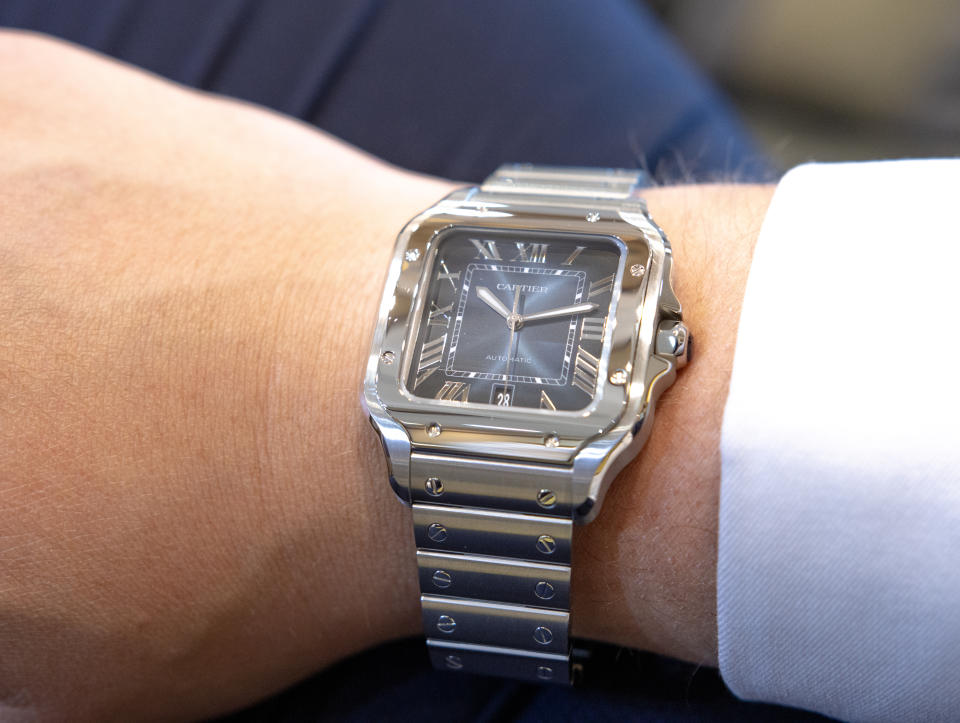
Courtesy Photo
WWD: What makes a watch a collectible?
Rarity and exclusivity would be obvious initial responses, but to me a piece becomes collectible because of the unique and authentic story behind it. The story can be brand-specific (for example, how Patek Philippe has positioned themselves as a piece shared between generations) or behind that specific watch (Paul Newman’s Daytona going up for auction). If the story becomes relatable and endearing to the person wearing it, it is collectible.
WWD: Please speak to the resiliency of the watch market during and post the pandemic.
At the beginning of the pandemic, we never would have thought demand for luxury watches would increase. We soon learned that people were sitting at home during lockdowns, the economy was driving income and they had ample time to research watches online. Demand seemed to constantly grow, and we relied on long-standing relationships and our brand reputation to sustain our business throughout that period. As we round the bend, and more clients are able to access brick-and-mortar stores like our sites in Aspen, Colo. and Scottsdale, Ariz., demand continues to increase as clients can finally see and feel the pieces they previously have only been able to read about. It has been a joy to have clients back in our stores.
WWD: How has the resale market affected the release schedule of timepieces and overall value of new styles?
I don’t think brands structure their releases with a major consideration of the secondhand market impact. Brands do what they want to do and after they make their move, the secondhand market reacts. That said, iconic brands definitely impact demand and the economy of the pre-owned market — for example, Audemars Piguet announcing the discontinuation of the Royal Oak 15202ST. The watch retails for $31,300 and is now selling on the secondary market for $106,000.
WWD: What are you looking forward to at the upcoming Watches and Wonders fair?
Finally traveling abroad and catching up in-person with friends. Watch brands are always hush-hush on their forthcoming releases, which makes it even more exciting to discover what’s next as the fair advances during the week — you simply never know what you will find. It will be interesting to see how Watches and Wonders now navigates clients, buyers and brands all being in the same room. We belong to a very large and growing industry that is pivoting to the future — it is exciting to see.
WWD: How has Instagram affected the popularity of classic timepieces?
Instagram has affected the popularity of classic timepieces exponentially. Before Instagram it was harder to find information and photos on historic pieces. Now people who may have never ever thought about a watch have exposure to so many pieces and are starting to pay attention.
WWD: With Instagram being a key tool for watch collectors, do you think the platform helps build buzz or affects the releases and sales of watches versus secondhand pieces?
Instagram is a great platform for brands to create buzz around new releases and increase the lore of their legacy pieces. However, not everyone can access the latest watches, and this feeds the secondary market as their entry point. Instagram has created unrealistic hype around some specific models, but overall, the buzz is good for the secondary market and the industry as a whole.
Name: Fabian Diaz, watch smith/watchmaker
IG Handle: @jfkrolex
Top 10 List:
Patek Philippe Nautilus
Vacheron Constantin Reference 57260
Audemars Piguet Royal Oak Skeleton
Jaeger-LeCoultre Reverso
Rolex Skydweller
Omega Speedmaster
Cartier Tank
Breitling Navitimer
Tag Heuer Monaco
Seiko Astron
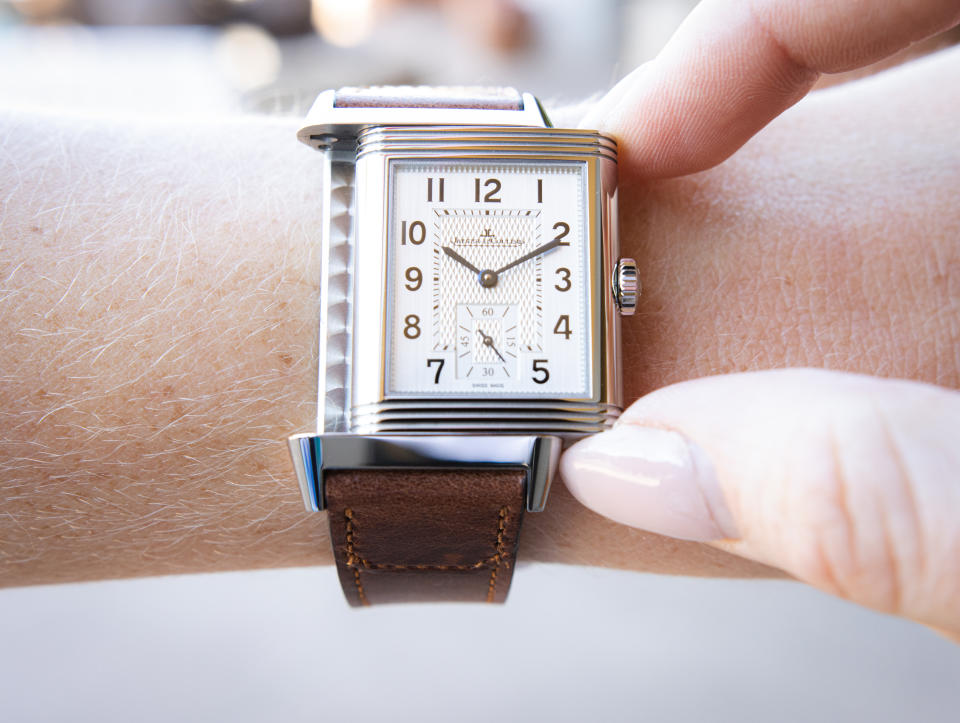
Courtesy Photo

WWD: What makes a watch a collectible?
Usually limited pieces on certain watch brands are an indicator of collectibles, colors of dials never done before, and retiring old models from production.
WWD: How has the watch market performed during the pandemic (pre and post/now)?
Watches will never be a dying breed, I honestly think the watch Industry is the modern day of stocks. I said it before, a lot of people buy watches because they hold value more and it’s an easier item to sell in a tough situation. Due to the pandemic and shortness of supply and demand it has driven the watches up in price and made them harder to obtain. Things have to shift back into motion eventually and with time some watches that are still in production will continue to be accessible.
WWD: How is the secondhand market/vintage affecting the release schedule of timepieces and overall value?
Vintage watches have always been huge in holding their value if not always increasing, it’s not an item you can still walk into the store and just buy, conditions are key, and the secondhand market has always had an impact on vintage. Social media has also played a big role in the secondhand craze because you see it and want it even more. Pieces that people start to look for spread like wildfire and everyone jumps on the same wave, driving availability dry.
WWD: How has Instagram affected the resurgence of classic timepieces?
By far a large dent, social media has made a lot of people icons, collectors, resellers. It has created its own lane, how? Well, it’s easy when you see a watch, you DM the person and get a price — a price with super inflation because you can’t find it. You have a modern day consumer turned watch salesman.
WWD: With Instagram being a key tool for watch collectors, do you think the platform helps or affects the releases and sales of new watches versus secondhand pieces?
Instagram is a free outlet, it definitely helps people who don’t know much about a watch get informed, with prices that at times aren’t disclosed on websites, or when it comes to fixing a piece, who’s the most reliable. The huge companies know what they are doing also jumping on the social media craze.
Name: Romain Rea, chief executive officer of Antiquorum
Top 10 List:
Rolex Sports wristwatch GMT
Patek Philippe Nautilus
Audemars Piguet Royal Oak
F.P. Journe
Omega Speedmaster vintage
Tudor Sport wristwatch, Marine Nationale Submariner or Snowflake
Cartier Crash
A. Lange & S?hne Datograph or Lumen
Jaeger-LeCoultre Reverso
Roger Dubuis Perpetual Calendar
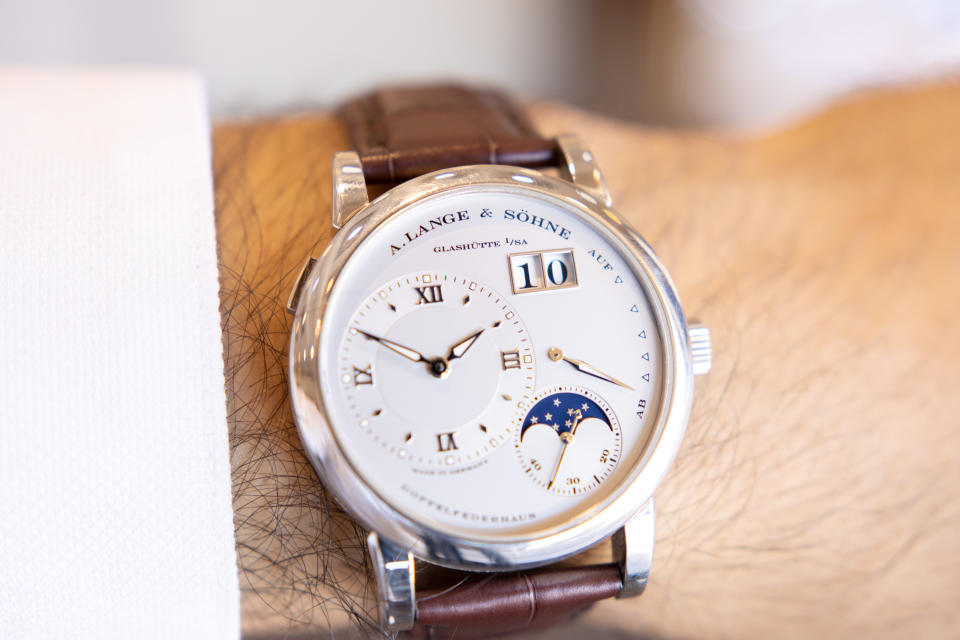
Courtesy Photo
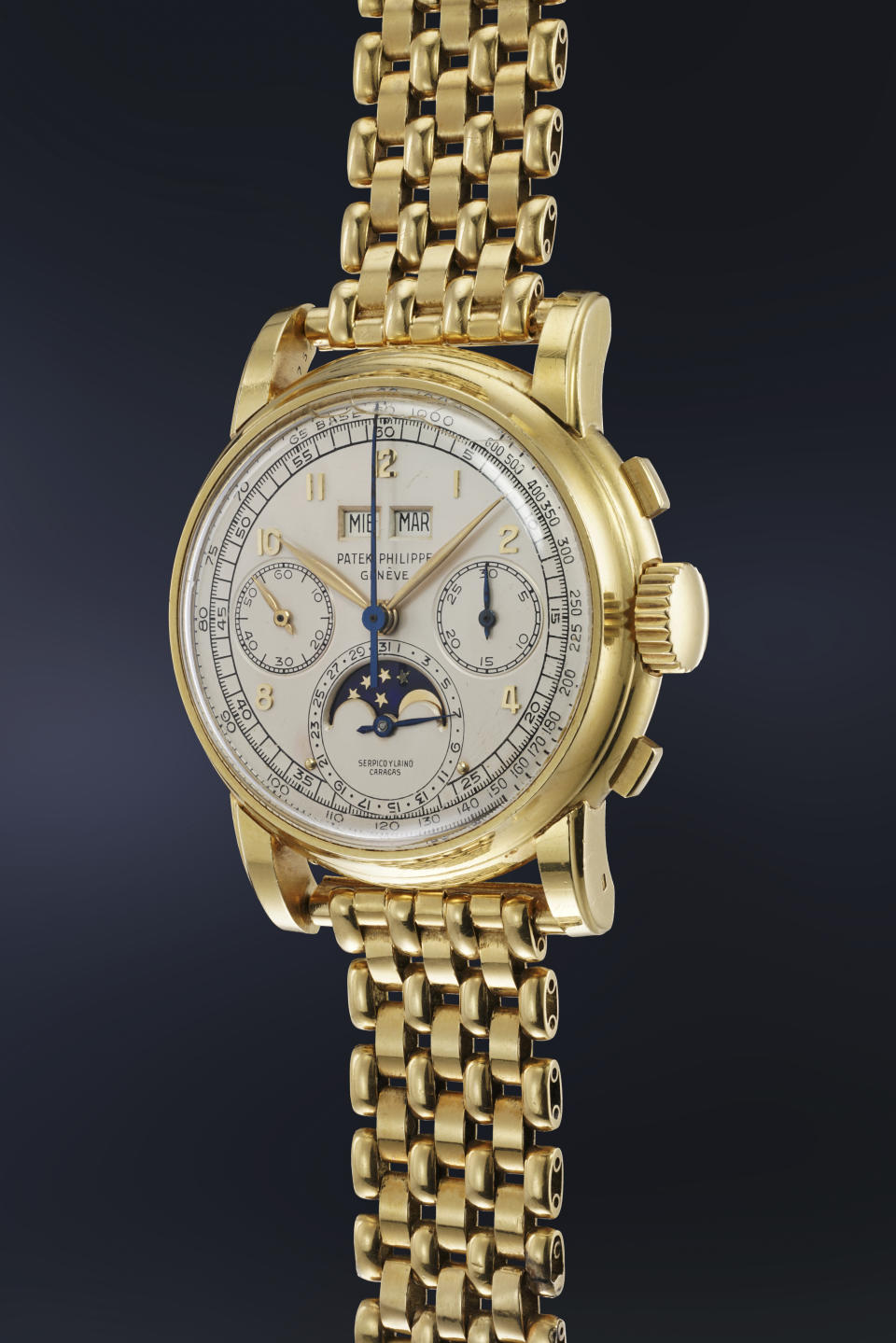
WWD: What makes a watch a collectible?
Its value on the market. There has been a change recently: watches more and more sought after by collectors are the ones promising a good investment. Investment first and passion second. So, nowadays, a collector will want a safe investment such as a Rolex or a Patek Philippe. The general condition of the watch, rarity of the production and the history linked to it.
WWD: How has the watch market performed during the pandemic (pre and post/now)?
People had more time and money to spend. Therefore they were very curious about this market. The watch market grew during the COVID-19 pandemic. So we had to develop our online auctions. Hence, in my opinion, this tragic pandemic did not have a negative impact on the watch market.
WWD: How is the secondhand market/vintage affecting the release schedule of timepieces and overall value?
The secondhand market was initially born because people wanted to pay less for a watch. This enhanced the value of modern watches, which allowed the manufacturer to produce in line with demand. Now it is a reverse situation, the market has become more expensive because of the lack of production of the first-hand market. Manufacturers have to respond to the demand of customers who might lose interest in a product because they are tired of waiting and so they go to the secondhand, even if it is more expensive. It is therefore necessary to produce less of the products less in demand, for example ladies’ watches.
WWD: How has Instagram affected the resurgence of classic timepieces? With Instagram being a key tool for watch collectors, do you think the platform helps or affects the releases and sales of new watches versus secondhand pieces?
Social networks have enabled the development of sales circuits, more entertaining. People have been able to discover this sector via new images (Facebook, Instagram, even TikTok), more artistic. For instance, when people see a picture of a wristwatch worn, they are able to better visualize their own image wearing it.
Name: Alexandre Ghotbi head of watches, continental Europe and the Middle East director, Phillips in association with Bacs & Russo
IG Handle: @the_vintage_lounge
Top 10 List:
??Patek Philippe
Rolex
Audemars Piguet
Vacheron Constantin
A. Lange & S?hne
Omega
F.P. Journe
Philippe Dufour
MB&F
Kari Voutilainen
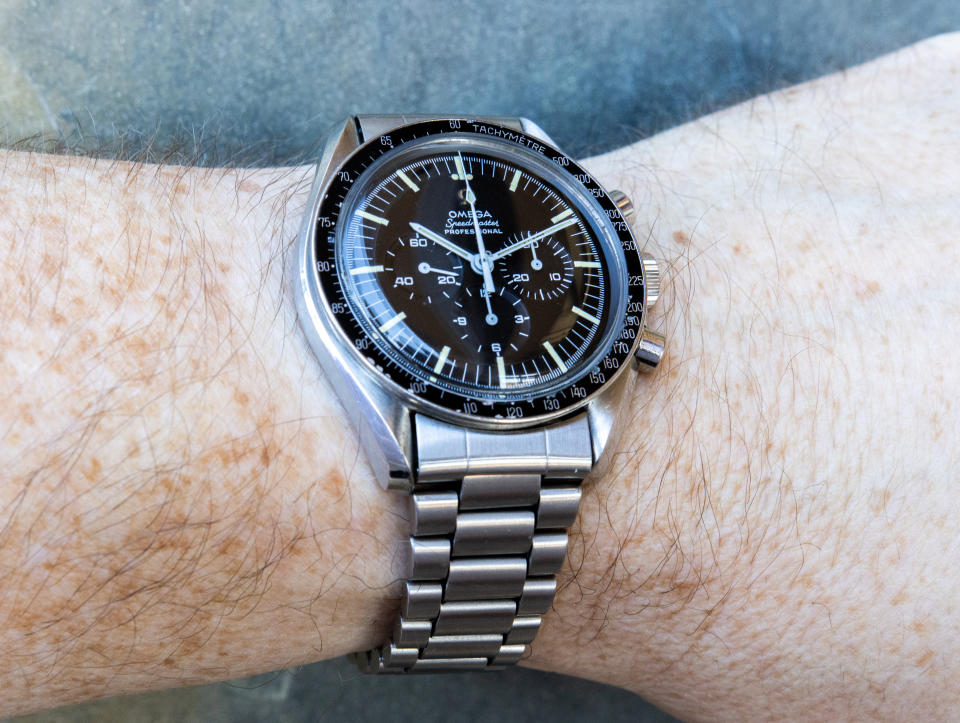
Courtesy Photo
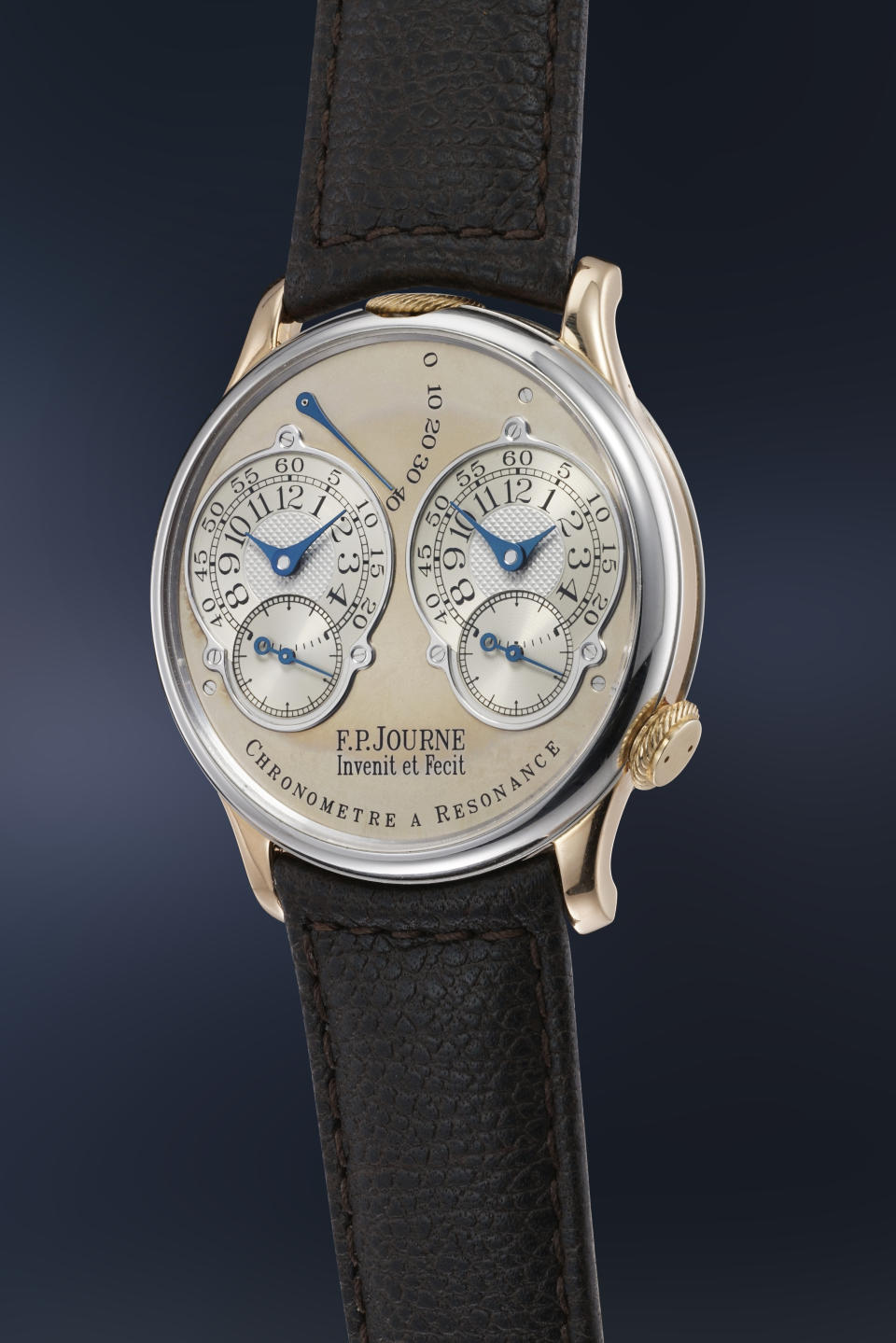
WWD: What makes a watch a collectible?
Its rarity, design, relevance in the horological sphere and if it has influenced others and, if vintage, its condition.
WWD: How has the watch market performed during the pandemic (pre and post/now)?
I can only speak for the secondary market and auctions and as a whole the market is extremely strong, but this only applies to specific brands and models. A new generation of collectors is starting to enter the market with more varied tastes and looking for watches of true horological relevance.
WWD: How is the secondhand market/vintage affecting the release schedule of timepieces and overall value?
The results in the auction market have opened the eyes of many aficionados on the current offering of many brands but I am not aware that it is affecting the release schedules.
WWD: How has Instagram affected the resurgence of classic timepieces?
Instagram’s influence has been twofold: It has standardized tastes and desires with photos of the same models regardless of whether the poster is in Tokyo, New York or Paris, but also has given access to a wide range of small independent watchmakers who without social media would never have been known.
WWD: With Instagram being a key tool for watch collectors, do you think the platform helps or affects the releases and sales of new watches versus secondhand pieces?
Instagram is an excellent sales and marketing tool and as such has a positive effect on sales, may they be secondhand or new releases, as the word gets out there quite fast and reactions and comments are immediate.
Name: Zoe Abelson, luxury watch dealer
IG handle: watchgirloffduty
Top 10 List:
Vintage Rolex Day-Dates w/rare stone and Stella dials
Cartier Crash
A. Lange & S?hne Little Lang 1 Moonphase Reference 182.086
Patek Philippe Perpetual Calendar Reference 3940J
F.P. Journe Resonance
Rolex Daytona Rainbow Reference
Royal Oak x Carolina Bucci
Panthere de Cartier Watch
Rolex Daytona Reference 116509 Meteorite Dial
F.P. Journe Elegante 40mm Titalyt 12 Rows of Diamonds
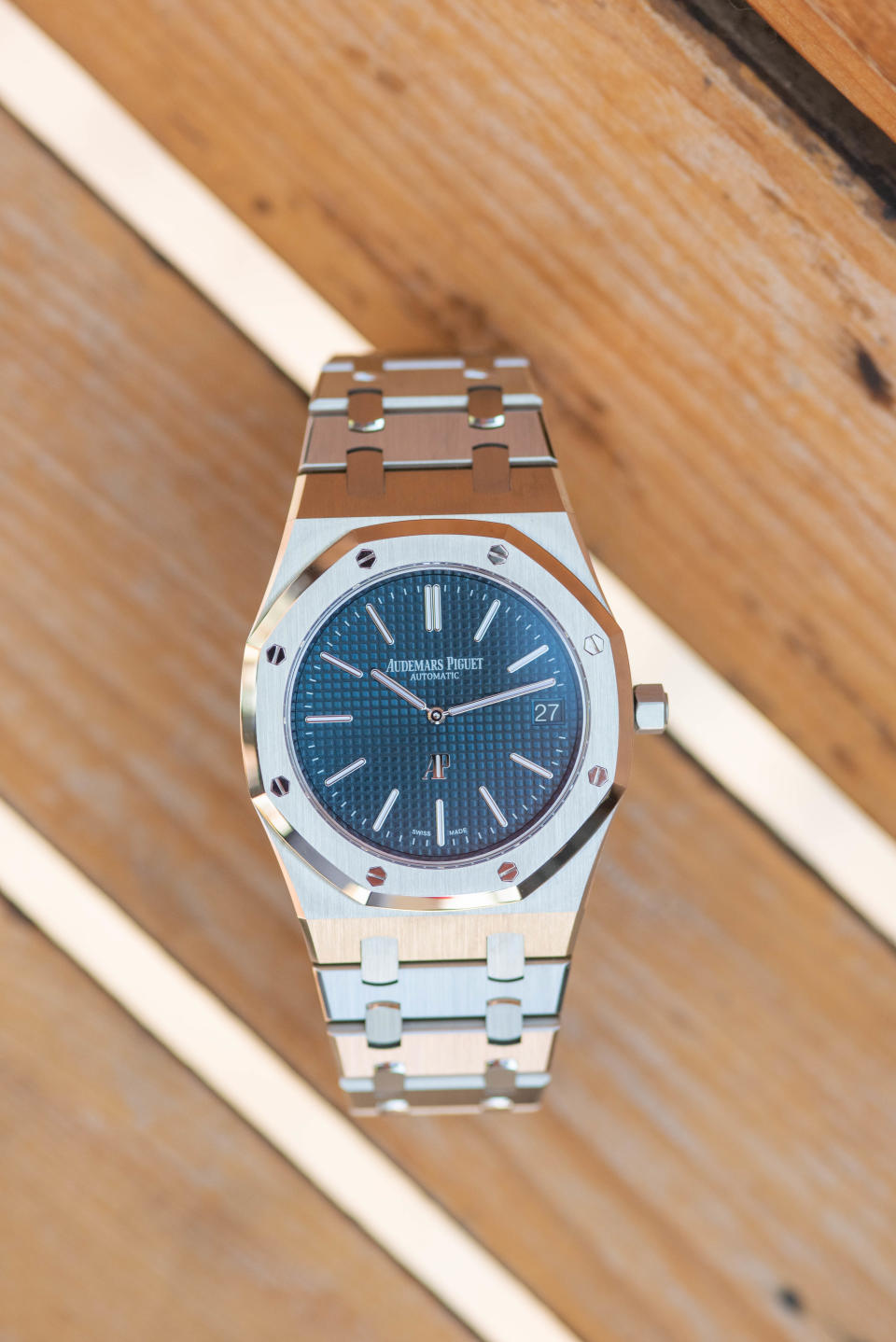
Courtesy Photo
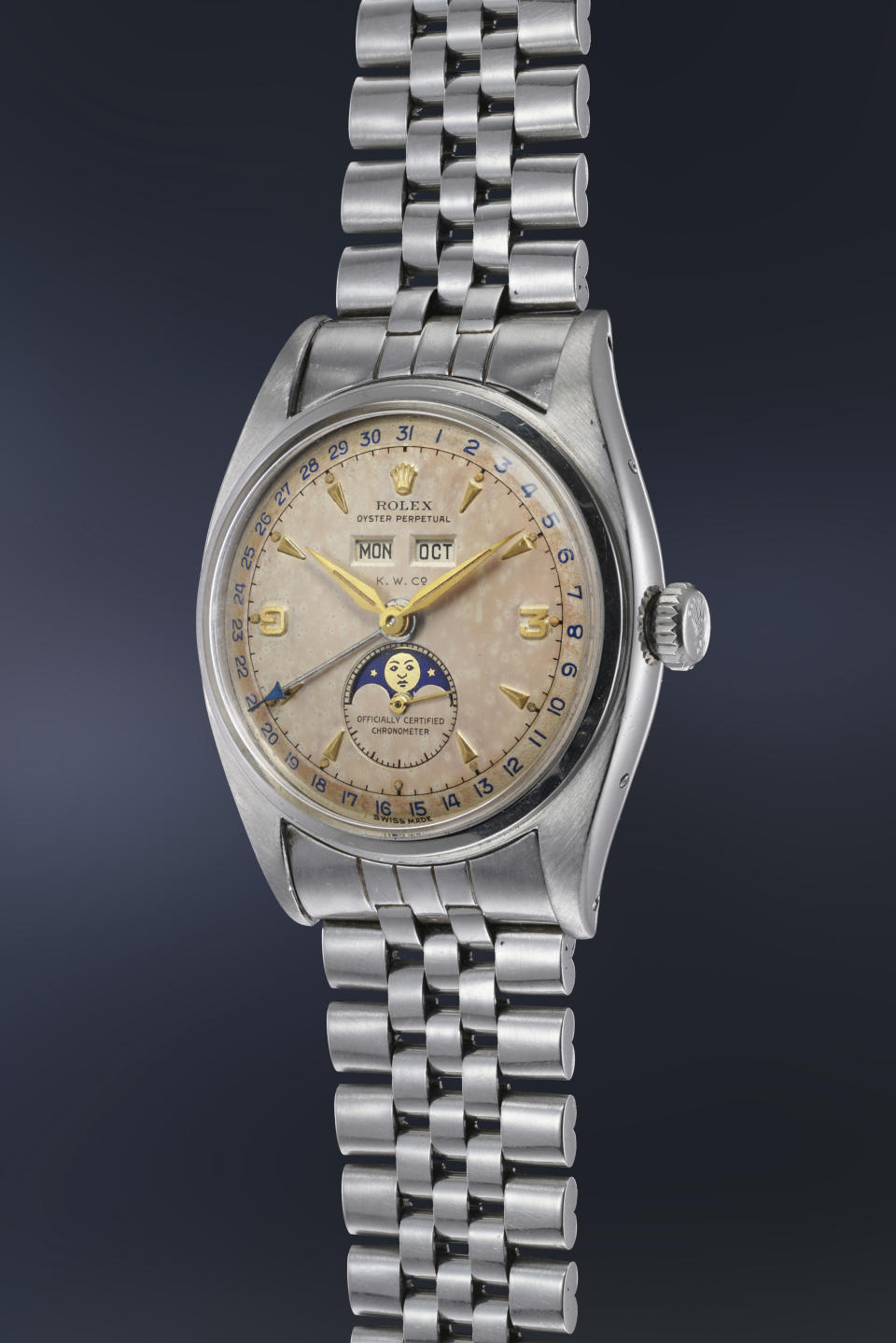
WWD: What makes a watch a collectible?
In general, for a watch to be collectible there is an element of uniqueness. Whether it be a beautifully aged vintage timepiece, a rare model that was produced in low quantities and that is not readily available on the market, a timepiece with dials produced out of rare materials, a complication produced with a special technical element to it. There has to be something interesting and different that sets the watch apart from the rest.
WWD: Please speak to the resiliency of the watch market during pandemic? Also post pandemic, has demand grown?
At the start there was a dip in the market since consumers and dealers were unsure how the pandemic would negatively affect the market. However, demand along with prices started to rise with people being at home and isolated socially and people realizing that watches are a hobby that you can connect with other people on. Aside from watches being a hobby to enjoy and get some instant gratification and connect to other people with, it also became clear to the masses that watches are great assets to invest in. Since that very short dip in the market in mid-2020, month by month demand and prices are continuing to rise.
WWD: How is the secondhand market/resale market affecting the release schedule of timepieces and overall value of new styles?
I feel the strong secondhand market shows brands that consumers are hungry for more. There are very obvious trends that can give brands a good indication for what the market wants and needs currently.
WWD: How has Instagram affected the popularity of classic timepieces?
In my opinion, Instagram is one of the top influences for what’s popular in the market today. Classic timepieces always have a strong market but with Instagram there has been more visibility on less classic and slightly different/interesting models, which has led collectors to delve into sectors of the industry such as independent watchmaking brands or other models that weren’t put in the spotlight by brands previously.
WWD: With Instagram being a key tool for watch collectors, do you think the platform helps build buzz or affects the releases and sales of new watches versus secondhand pieces?
I feel Instagram is the best source for watch releases and industry news — more so than blogs dedicated to this type of media. Instagram is for quick attention grabbing content, and if you want to learn more then you dive a little deeper through the account posting. Instagram has more visibility and can pull in a wider set of potential consumers since people are on the platform for general entertainment, not just watch collectors. Someone on Instagram may not know they have any interest to learn about a watch, but that can change easily when scrolling through Instagram and having a post catch your eye.
Name: Edouard Caumon, U.S. country manager at Watchfinder & Co.
Top 10 List:
Rolex
Patek Philippe
Omega
Audemars Piguet
A. Lange & S?hne
Breitling
Jaeger-LeCoultre
Vacheron Constantin
Cartier
IWC

Courtesy Photo
WWD: What makes a watch a collectible?
While many facets around collecting watches are emotionally driven, there are factors like demand and fixed quantities that often created the perfect storm to bring certain watches to collector status.
WWD: How has the watch market performed during the pandemic?
The watch market has grown exponentially over the past few years and even during the uncertainty caused by the pandemic, it continued to grow. With an increasing interest in watches, access to disposable income and timepieces being viewed as a practical luxury, the watch industry has seen a tremendous boost across the first and secondary markets.
WWD: How is the secondhand market/vintage affecting the release schedule of timepieces and overall value?
With an established and controlled secondhand market led by trusted resources like Watchfinder, people are more confidentially purchasing watches with the knowledge that there is a circular economy for a timepiece. Secondhand has become an integral component of the watch industry that has allowed for the appreciation of horology to reach an exponentially wider audience.
WWD: How has Instagram affected the resurgence of classic timepieces?
Being a highly digital brand, Watchfinder has seen firsthand the watch community that has formed on Instagram. The platform has democratized an industry that had previously been perceived as only aspirational to some. Instagram has allowed for a forum of discussion and education that has introduced the beauty of watchmaking to a whole new audience.
WWD: With Instagram being a key tool for watch collectors, do you think the platform helps or affects the releases and sales of new watches versus secondhand pieces?
I think the platform helps. Instagram has become a destination for discovery, dialogue and even commerce. Brands have the ability to communicate directly with their audiences in a way that wasn’t available before Instagram. Its effect on every facet of the watch industry — from collector to brand to first-time buyer — is undeniable.
Name: Vittorino Loreto, chief executive officer and cofounder of Italian Watch Spotter, IWS
IG Handle: @italianwatchspotter @vitto.lrt
Top 10 List:
Audemars Piguet Royal Oak, especially the 15202 and the perpetual calendars.
Patek Philippe Nautilus 5711: same reason as the 15202.
Bulgari Octo Finissimo: for its disruption, records and innovation.
Rolex Vintage Daytonas
Omega Speedmasters: a must-have for every watch enthusiast.
Vacheron Constantin the latest skeleton perpetual calendars are insane.
F.P. Journe Chronometre a Resonance and Tourbillon Souverain.
H. Moser & Cie. for their witty and savvy marketing campaigns.
De Bethune Starry Various DB25
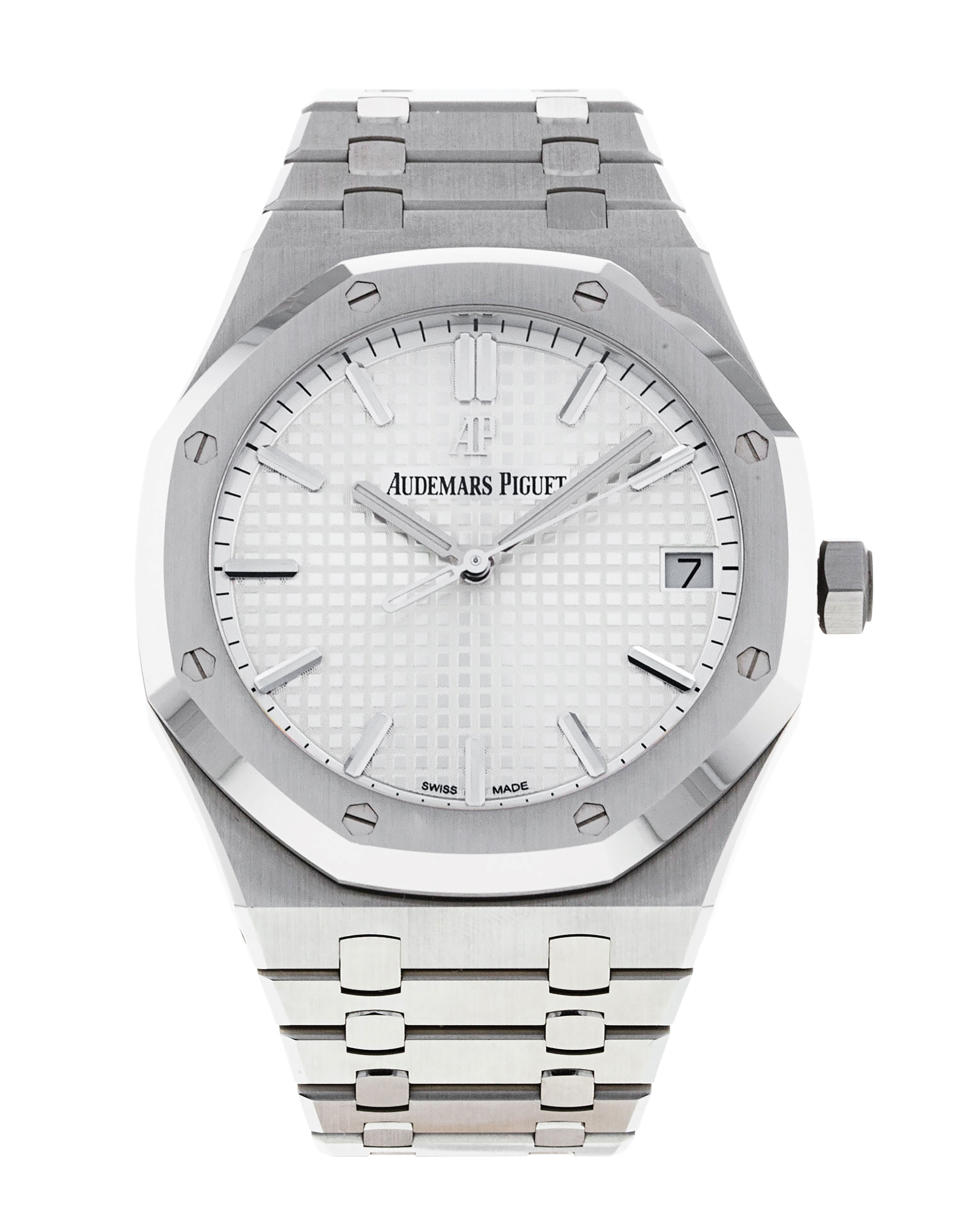

WWD: What makes a watch a collectible?
The three most important things that make a watch collectible are its rarity, the history it represents and the continuous changes in people’s taste during years. For example, vintage Daytonas weren’t liked as much as they are right now.
WWD: How has the watch market performed during the pandemic?
The watch market has not suffered from the pandemic that much. The secondary market has grown and list prices did the same without seeing any slowdown in demand. Major auction houses have also seen increased attendance at their events and increased average prices for lots.
WWD: How is the secondhand market/vintage affecting the release schedule of timepieces and overall value?
The renewed taste for vintage has brought some maisons to consider the remake of some of their heritage pieces. Just think about the Audemars Piguet [Re]master 01.
Talking about value, I think that the increased prices of the secondary market are certainly driving an increase in list prices and we can definitely see it as list prices are growing almost 10 percent year on year.
WWD: How has Instagram affected the resurgence of classic timepieces?
I think Instagram has played a major role in the watch industry. Luxury watches are a very photogenic item so Instagram was the perfect storm to unleash the power of the industry. Something that before was restricted to a very small niche and hardly accessible now with Instagram is visible to millions and millions of people and since, of course, nice watches are beautiful this obviously drives a spike in demand.
WWD: With Instagram being a key tool for watch collectors, do you think the platform helps or affects the releases and sales of new watches versus secondhand pieces?
In the end every watch posted on Instagram benefits the watch industry, independently of it being modern, vintage, restored. Of course, I am assuming that actual conditions are maintained.
Sign up for WWD's Newsletter. For the latest news, follow us on Twitter, Facebook, and Instagram.